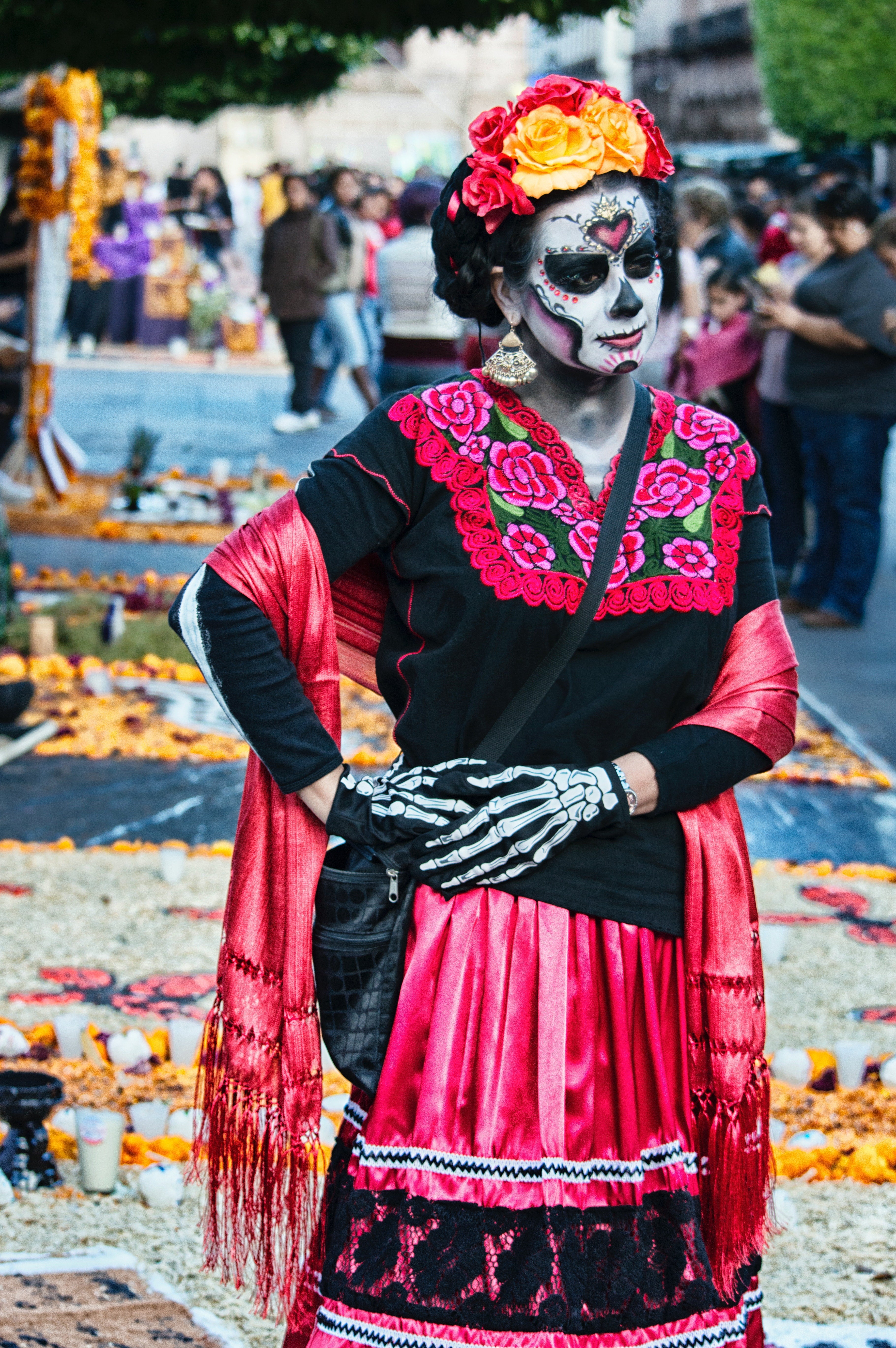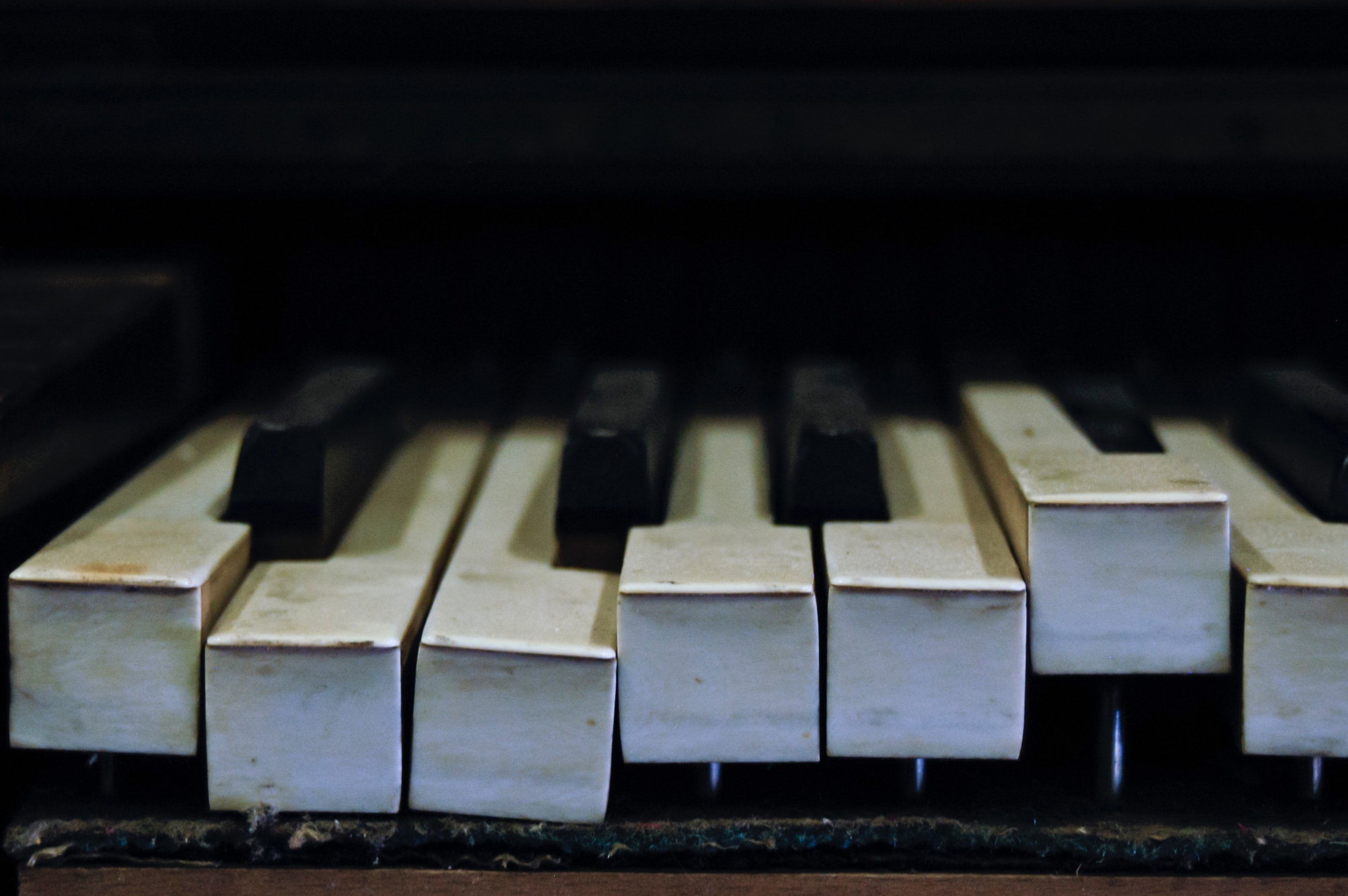
Dia de Muertos - A Sacred Commemoration of Life and Death
You’ve seen the sugar skulls, the orange flowers, the intricate makeup, and the altars. You remember something about honoring the dead and something else about the advent of their souls. You even watched Coco! But what do you really know about The Day of the Dead?
What is Dia de Muertos?
Day of the Dead, or Dia de Muertos, is a sacred spiritual festivity demonstrating respect and reverence towards dead loved ones. A fundamental holiday to Mexican culture, it centers around the idea that you will always be a member of your community. Even after the death of your physical body, your spirit and soul will be kept alive by the love of your memory. A stark contrast to the morose associations we have with death here in the US, the intent behind Dia de Muertos is not to mourn the dead with agony and sorrow, but rather to celebrate them for the lives they lived.
 A traditional catrina costume. Photo by Sheibi AL.
A traditional catrina costume. Photo by Sheibi AL.
The Origins
Day of the Dead is celebrated throughout most of Central and Latin America, but its roots lie in the south of Mexico. While its exact origins are murky due to thousands of years of cultural development, we know for sure that Dia de Muertos, like many Mexican traditions, is a blend of Catholic and indigenous customs.
Dia de Muertos combines ancient practices from the devotion of the Mesoamerican goddess of death, Mictecacihuatl, with ceremonies from the Catholic tradition of All Saints Day.
 A traditional procession. Photo by Ernesto Rodríguez.
A traditional procession. Photo by Ernesto Rodríguez.
The Celebrations
At the heart of Dia de Muertos is the belief that for two hallowed nights (November 1 and 2), the souls of our departed loved ones return to our company on Earth again. Though specific traditions vary from region to region throughout Mexico, one thing is for sure- The celebrations are always a lively, joyous occasion. Beautiful, detailed altars are erected in homes and cemeteries as exuberant festivals erupt around the country.
 A path of ofrendas line the streets in Janitzio. Photo by Carlos Aranda.
A path of ofrendas line the streets in Janitzio. Photo by Carlos Aranda.
The Details
La Ofrenda
The ofrenda, or offering, refers to an altar set up to honor a deceased loved one. It includes personal items like photographs and old belongings. It is also traditional to include things that the person enjoyed in life, such as a favorite food or drink.

An ofrenda in Cozumel. Photo by Vlad Tchompalov on Unsplash.
La Calavera
There’s no doubt that the calavera, or skull, is one of the most important icons of Mexican culture. Like the holiday of Dia de Muertos itself, the calavera represents death with colorful vibrancy rather than macabre gloom. Mexican calaveras are bold and ornate depictions of the human skull, adorned with beautiful, eye-catching designs.
 Ceramic calaveras. Photo by Gadiel Lazcano.
Ceramic calaveras. Photo by Gadiel Lazcano.
El Alfeñique
Alfeñique refers to a molded confection, often taking form as the ever recognizable sugar skull synonymous with Day of the Dead. Alfeñique skulls are quite popular throughout Mexico during the fall, as they are typically used in ofrendas.
 Alfeñiques. Photo by Miguel Á. Padriñán.
Alfeñiques. Photo by Miguel Á. Padriñán.
La Catrina
La Catrina is the depiction of an elegant skeletal woman, dressed in extravagant clothing and donning a fancy hat or headdress of flowers. She was originally created by political cartoonist José Guadalupe Posada in the early 1900s as a protest to the Eurocentric beauty standards poisoning Mexican society. Today, she stands tall as an icon of Dia de Muertos and Mexican culture itself.
 A trio of catrinas. Photo by Valeria Almaraz.
A trio of catrinas. Photo by Valeria Almaraz.
El Pan de Muerto
El pan de muerto translates literally to “the bread of the dead”. It is a Mexican sweet bread eaten as part of the Dia de Muertos festivities. The bread itself is a round bun, flavored with orange and anise, and sprinkled with sugar on top. It features little bread bones as decorations and is used as part of the ofrenda. A popular way to enjoy pan de muerto is dipped in Mexican hot chocolate.
 Pan de muerto. Photo by Marco Samaniego.
Pan de muerto. Photo by Marco Samaniego.
La Flor de Muerto
The phrase flor de muerto, or “flower of the dead”, refers to the Mexican marigold. This flower is instantly recognizable not just for its beautiful golden color, but also for its smell. Surprisingly, the odor of the Mexican marigold is quite pungent and musky. It is believed that this strong aroma helps lead the spirits of the deceased into the world of the living.
 Calaveras and marigolds. Photo by Sofia Ochoa.
Calaveras and marigolds. Photo by Sofia Ochoa.



